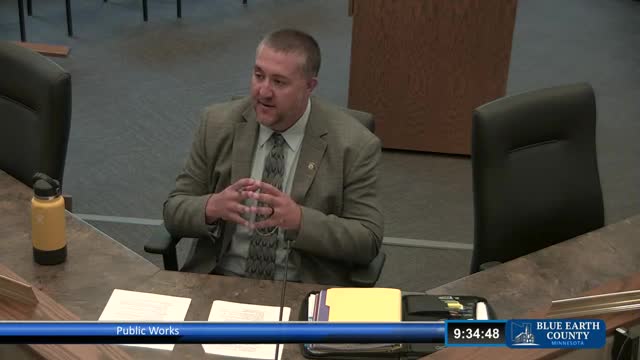Experts Warn of Potential Dam and Bridge Failures
July 10, 2024 | Blue Earth County , Minnesota

This article was created by AI summarizing key points discussed. AI makes mistakes, so for full details and context, please refer to the video of the full meeting. Please report any errors so we can fix them. Report an error »

In a recent government meeting, officials discussed the precarious condition of a local bridge and dam, highlighting ongoing challenges related to stability and erosion. The meeting revealed that attempts to measure scour depth at the bridge piers have been hampered by high water flow and turbidity, making accurate assessments difficult. Current estimates suggest that approximately 9,000 to 10,000 cubic feet per second of water is still flowing, complicating efforts to evaluate the structure's integrity.
Officials are weighing the options of repairing or replacing the aging bridge, which is over 40 years old. The decision hinges on obtaining better data regarding the scour and erosion affecting the bridge's piers. If the erosion continues, investing significant resources into repairs may not be justifiable. The potential for dam or bridge failure remains a concern, especially in light of recent flooding events.
The meeting also addressed the need for a coordinated response to ensure public safety, including monitoring the bridge and dam conditions. An interim plan is being developed to stabilize the dam and assess the bridge's future. The U.S. Army Corps of Engineers is expected to provide further insights during an upcoming visit, which officials hope will clarify the situation.
Additionally, discussions included the expectations from FEMA regarding cost estimates for potential repairs or replacements. Officials expressed caution about proceeding without a clear understanding of FEMA's requirements, fearing that resources might be wasted on speculative engineering efforts.
Recent events in nearby Manawa, Wisconsin, where a smaller dam breached under similar circumstances, have underscored the urgency of the situation. Local officials are actively monitoring the conditions and preparing for further evaluations as water levels recede, allowing for a more thorough assessment of the dam and bridge's structural integrity.
Officials are weighing the options of repairing or replacing the aging bridge, which is over 40 years old. The decision hinges on obtaining better data regarding the scour and erosion affecting the bridge's piers. If the erosion continues, investing significant resources into repairs may not be justifiable. The potential for dam or bridge failure remains a concern, especially in light of recent flooding events.
The meeting also addressed the need for a coordinated response to ensure public safety, including monitoring the bridge and dam conditions. An interim plan is being developed to stabilize the dam and assess the bridge's future. The U.S. Army Corps of Engineers is expected to provide further insights during an upcoming visit, which officials hope will clarify the situation.
Additionally, discussions included the expectations from FEMA regarding cost estimates for potential repairs or replacements. Officials expressed caution about proceeding without a clear understanding of FEMA's requirements, fearing that resources might be wasted on speculative engineering efforts.
Recent events in nearby Manawa, Wisconsin, where a smaller dam breached under similar circumstances, have underscored the urgency of the situation. Local officials are actively monitoring the conditions and preparing for further evaluations as water levels recede, allowing for a more thorough assessment of the dam and bridge's structural integrity.
View full meeting
This article is based on a recent meeting—watch the full video and explore the complete transcript for deeper insights into the discussion.
View full meeting
